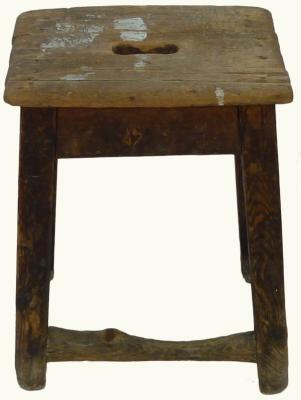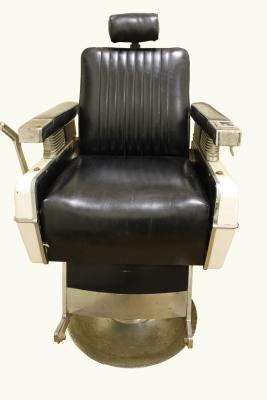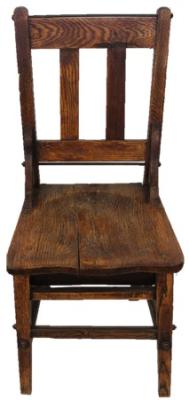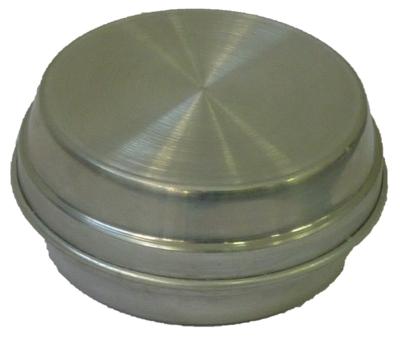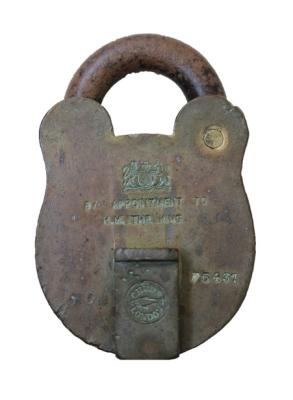LANDSCAPE PAINTING BUFFALO HUNTING
Large, framed, landscape painting depicting man on horseback hunting a buffalo. The painting is completed in acrylics on stretched canvas. The bottom half consists of flat prairie vista with sparse yellow, green and red vegetation. A native American man is shown riding a dapple-grey horse, ready to spear a buffalo in the centre of the painting. A flat-top, black coloured mountain range is shown on the horizon against a pale white-blue sky. Two groups of black birds are depicted in left and right-hand sky. The artist's signature is painted in black in bottom righthand corner, "REVEL". The painting is in a thin, grey coloured, wooden frame.
Details
Details
Revel Ronald Cooper was born of Nyungar descent at Katanning, Western Australia, in 1934. As a young boy Cooper was declared a ward of the state and placed in the Carrolup Mission settlement. Amid conditions of poverty and degradation, the school’s headmaster, Noel White, established educational programs in art and music in 1945. The Mission is best known for fostering the Carrolup style of painting, a style that became famous in Australia and overseas, with many pupils going on to become established artists. The Carrolup Mission was closed by the Department of Native Affairs in 1951, and unfortunately many former students of the school later found themselves behind bars in Fremantle Prison, where the Carrolup art style became a common theme in prisoner art.
Revel’s own work first appeared in Child Artists of the Australian Bush, written by Dame Mary Durack Miller in 1952. Noel White intended that the training provided at Carrolup would serve a vocational role and Cooper was employed for a short period by J. Gibbney & Son Pty Ltd, who were commercial artists in Perth. When Carrolup Mission closed, Cooper worked locally as a farm labourer and as a railway fettler.
In November 1952 Cooper was convicted of manslaughter and sentenced to four years’ imprisonment. Cooper subsequently served several prison sentences in both Western Australia and Victoria. Despite these terms of incarceration, Cooper still succeeded in forging a career as an artist. In the mid-1950s he was employed briefly at Bill Onus’ Aboriginal Enterprise Novelties, where he became a role model for the young aspiring artist Lin Onus, and a formative influence on later generations of Nyungar artists. With help from art collector James Davidson and the Victorian Aborigines Advancement League, Cooper exhibited regularly during the 1960s in Victoria and elsewhere, gaining recognition for his landscapes and corroboree scenes.
During a term in Fremantle Prison, Cooper undertook several art commissions, including illustrations for the second edition of Mary Durack’s book Yagan of the Bibbulmun, published in1976, and images of the Stations of the Cross for the Sacred Heart Church, Mount Barker, in Western Australia.
With emerging Aboriginal self-determination, Cooper assumed a new cultural voice. While imprisoned in Geelong, Victoria, he wrote an article, To Regain Our Pride, for the July-September 1968 issue of the Aboriginal Quarterly. In an interview for a documentary, The Broken Covenant, broadcast posthumously by Australian Broadcasting Corporation television on 1 September 1983, he recalled his experiences with discrimination and injustice, and, in a passionate affirmation of his Aboriginality, attacked the materialism of a ‘white’ and ‘machine’ world.
Cooper’s struggle with alcoholism, and his itinerant lifestyle contributed to both his achievements and the tragedy of his life. Around April of 1983 he died from head injuries sustained when he was attacked with a heavy instrument. His body was found on 28 December 1985 at Buxton, after a Matthew DeCarteret confessed to his murder. Cooper was buried on 30 January 1987 in the Catholic section of the Fawkner cemetery.
Cooper is regarded as a leading figure of a distinctive Nyungar landscape tradition, which is the heritage of Carrolup. His work is represented in the Berndt Museum of Anthropology at the University of Western Australia, the Art Gallery of Western Australia, Fremantle Prison, the Fremantle Hospital and the Holmes à Court collection.




